 |
|
|
|
|
|
Because of the relatively high phytoproduction and the simultaneously low rate of decomposition due to low temperatures, a large food supply exists for destruents. There is a large diversity of these organisms in alpine habitats. |
|
In the meadows just above the timberline (c. 1900 m in the European Alps), earthworms (Lumbricidae) are the dominant soil macrofauna species. Their biomass accounts for about 90 % of the soil macrofauna biomass. |
|
At a higher altitude (c. 2300 m), the biomass of earthworms decreases. They are mainly found in agriculturally managed land in areas favourable for dung concentration such as resting places of sheep. The niche vacated by the diminishing earthworm population is now occupied by fly larvae, white worms (Enchytraeidae) and millipedes (Diplopoda). The latter reaching their highest densities at this altitude. |
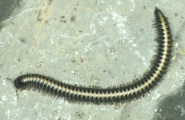 1 1
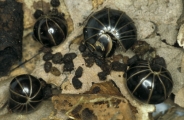 2 2 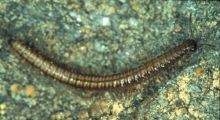 3 3
 4 4
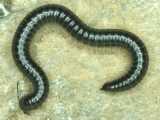 5 5
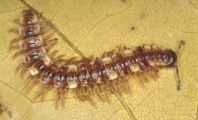 6 6 |
|
Various representatives of the order of millipedes (Diplopoda): 1 - Leptoiulus riparius (110K); 2 - Onchyglomeris sp. (117K); 3 - Trimerophorella rhaetica (117K); 4 - Glomeris conspersa (121K); 5 - Leptoiulus allemannicus (140K); 6 - Polydesmus collinus (113K) Photo: B. Knoflach-Thaler |
|
7 - Larvae of a flat-footed fly (Platypezidae) Photo: B. Knoflach-Thaler; (122K) |
At the highest altitude (ca. 2600 m) fly larvae are the dominant decomposers. Second in importance as soilfauna components are beetle larvae (Coleoptera) which gain importance with increasing altitude. Flies fulfill two important functions in high altitude ecosystems: they substitute for the earthworms as decomposers and are the main pollinators for high alpine flowering plants. |
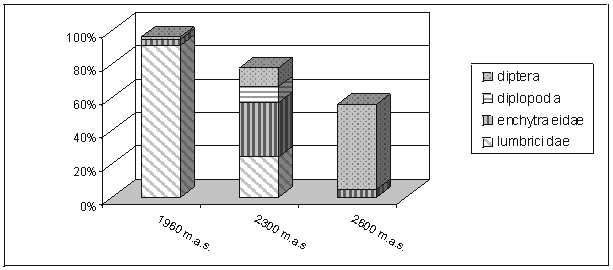
8 - Change of species composition in soil macrofauna decomposers in the Europea Alps. Figure after Meyer & Thaler, 1995 |
Besides the general trend in species composition change along the altitudinal gradient, species composition can markedly change at different sites. Here several factors can play a role: |
|
The parental rock of a site influences the pH of soils. Siliceous parent rock leads to acid conditions, whereas calcareous parental rock leads to alkaline conditions. Diptera and coleoptera larvae are most abundant under acid conditions, in calcareous pastures, millipedes are the most important decomposers. Earthworms have been found under both conditions, but their species composition changes (Lumbricus rubellus, Dendrobaena octaedra on siliceous sites, Lumbricus rubellus, Allolobophora handlirschi, Octolasion lacteum at calcareous sites). |
|
|
|
Meyer E and Thaler K (1995) Animal diversity at high altitudes in the Austrian central alps. Ecological studies 113:97-107. |
|||
29 August 2011 |
||
| |
||
